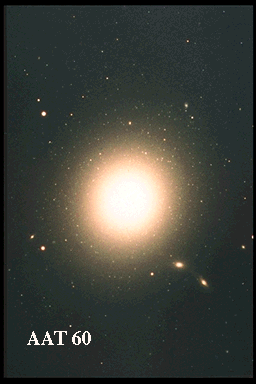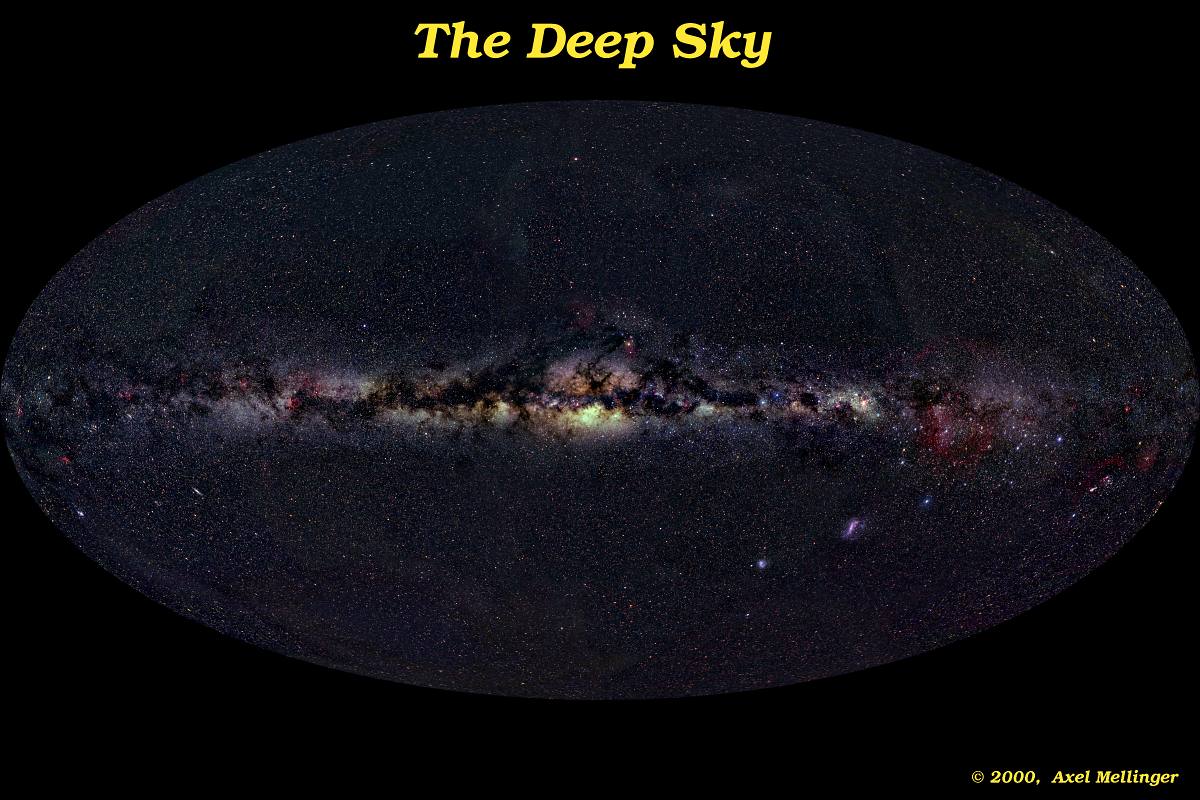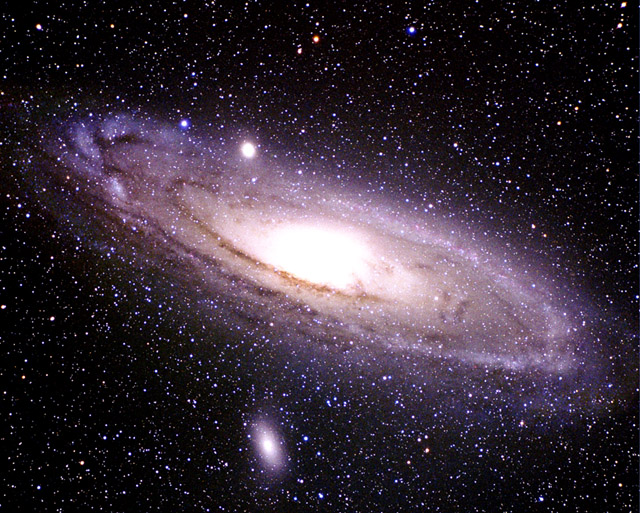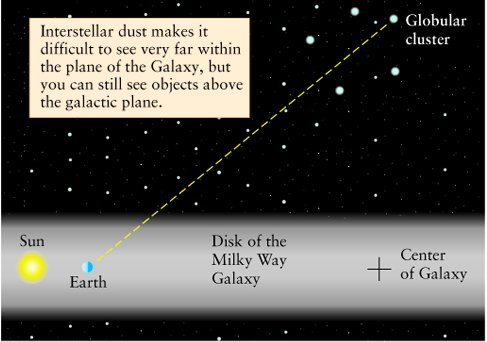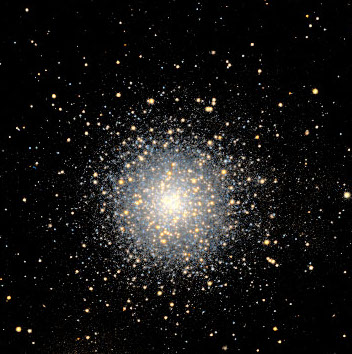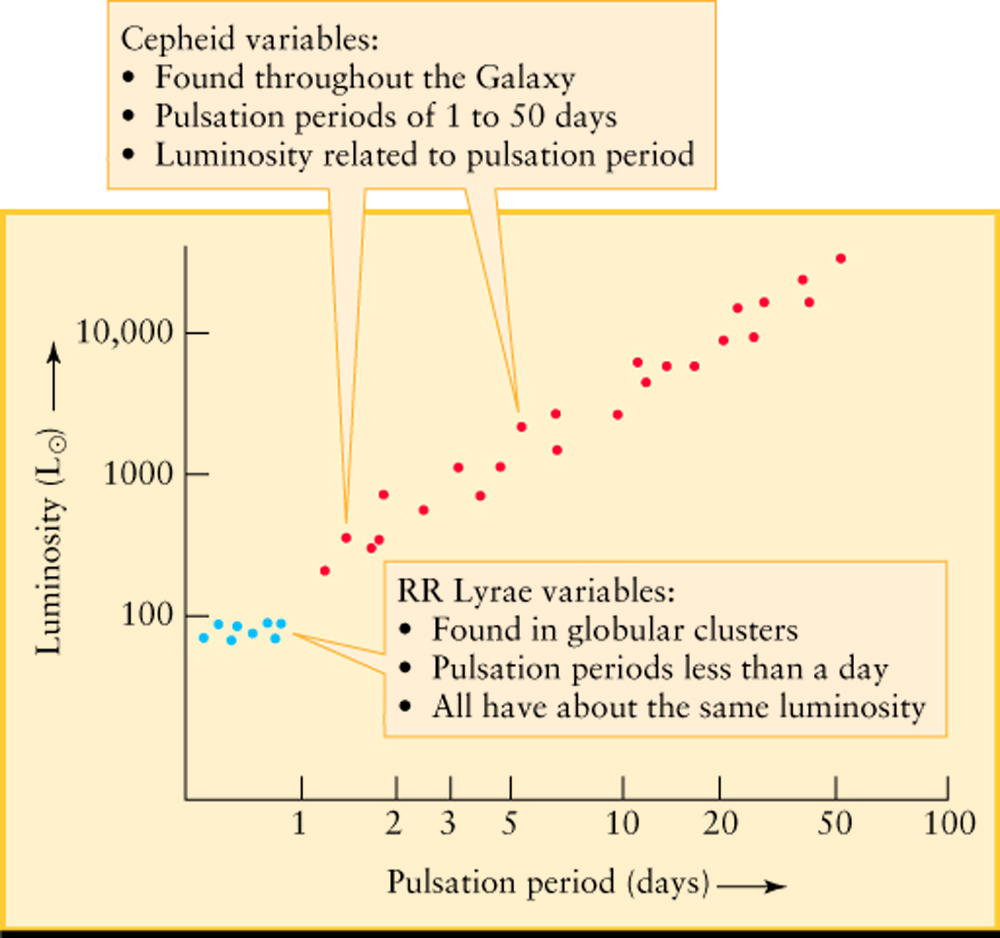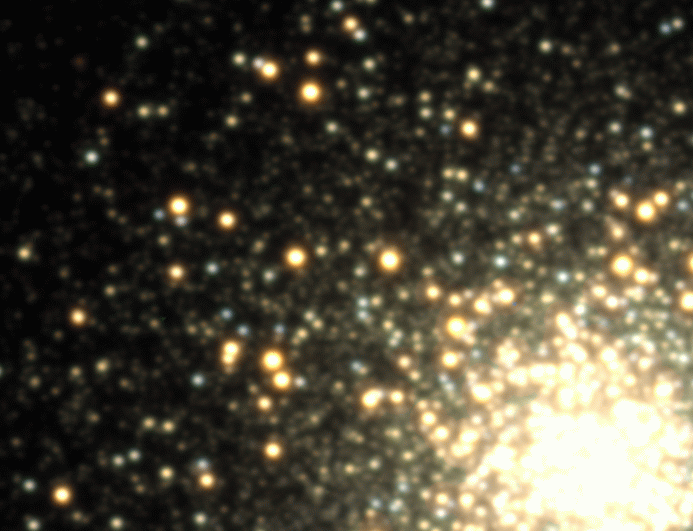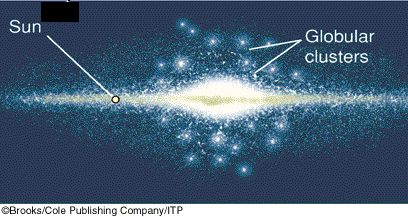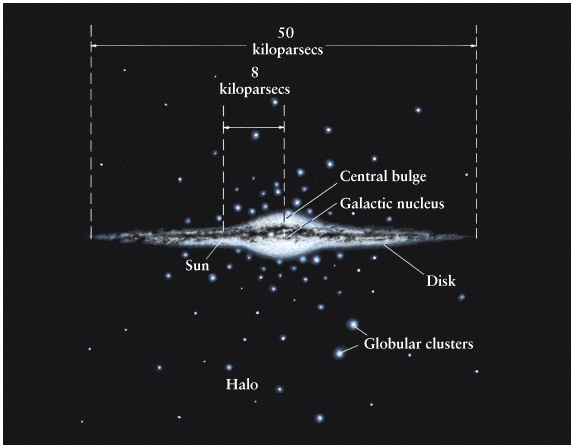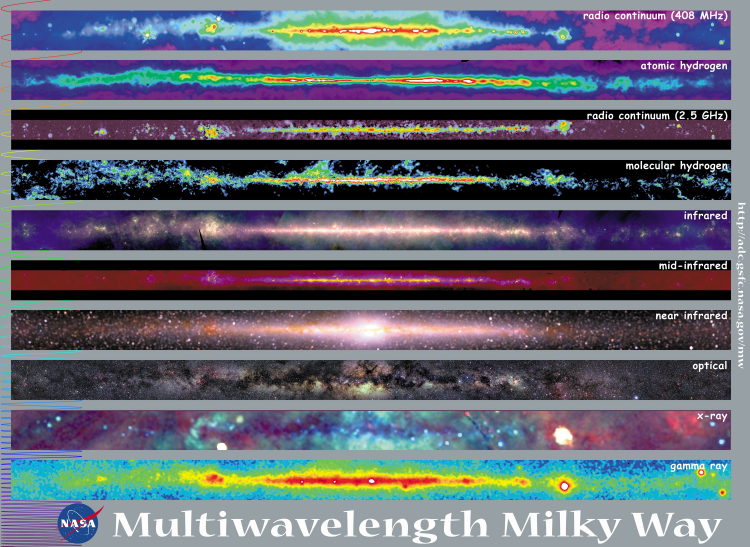How does the Sky Look from Inside of a Disk Galaxy?
- Since the stars are in a disk, we will see :
- Lots of stars when we look in the plane of the disk.
- Very few stars when we look out of the plane of the disk.
- We should see more stars when we look towards the
centre of the disk than away from the centre.
- This agrees with our observations!
- This suggests that the Milky Way might look like
Andromeda if we could fly out far from the galaxy
and take its photo.
- And the the Sun is not at the center of the Milky Way !
- This was not, however, an easy observation, due to extinction.
W. Herschel in 18th century concluded that we are at the center.
|
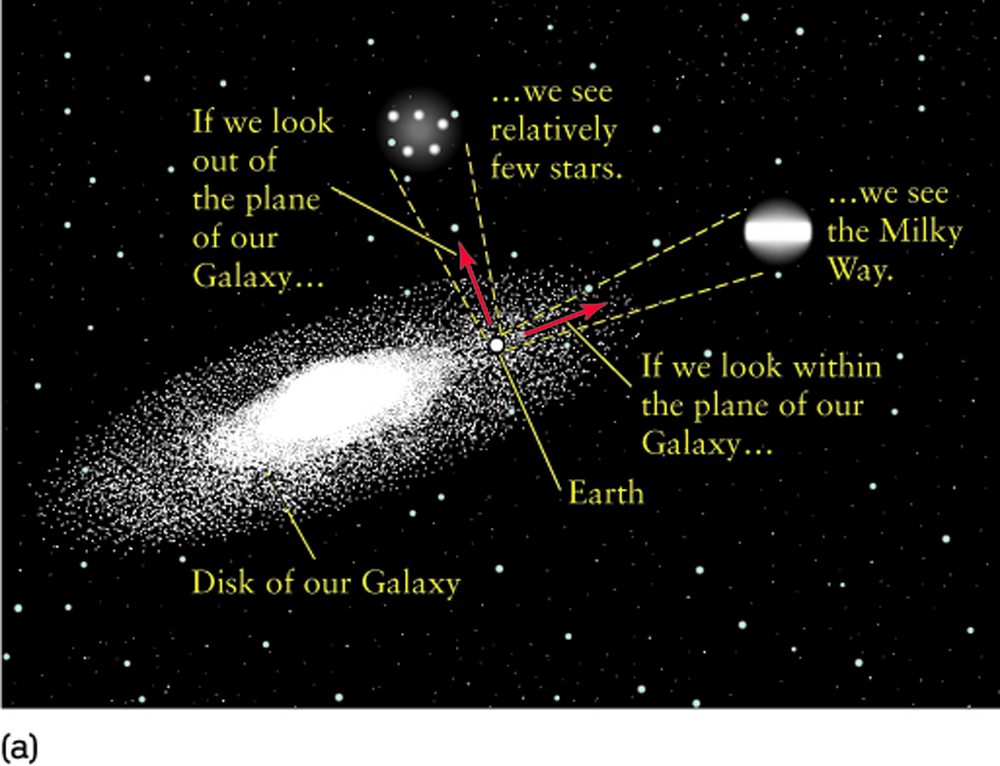
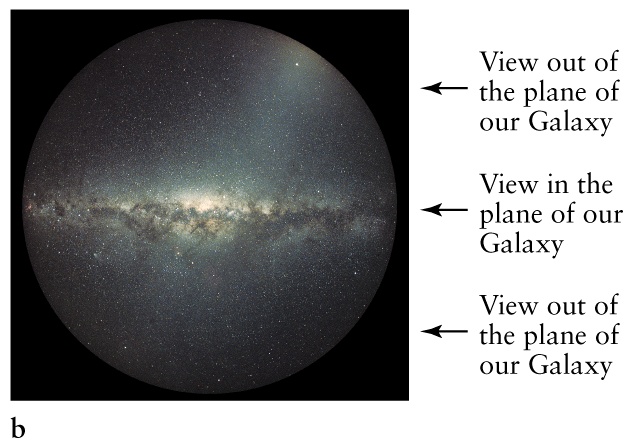 |
